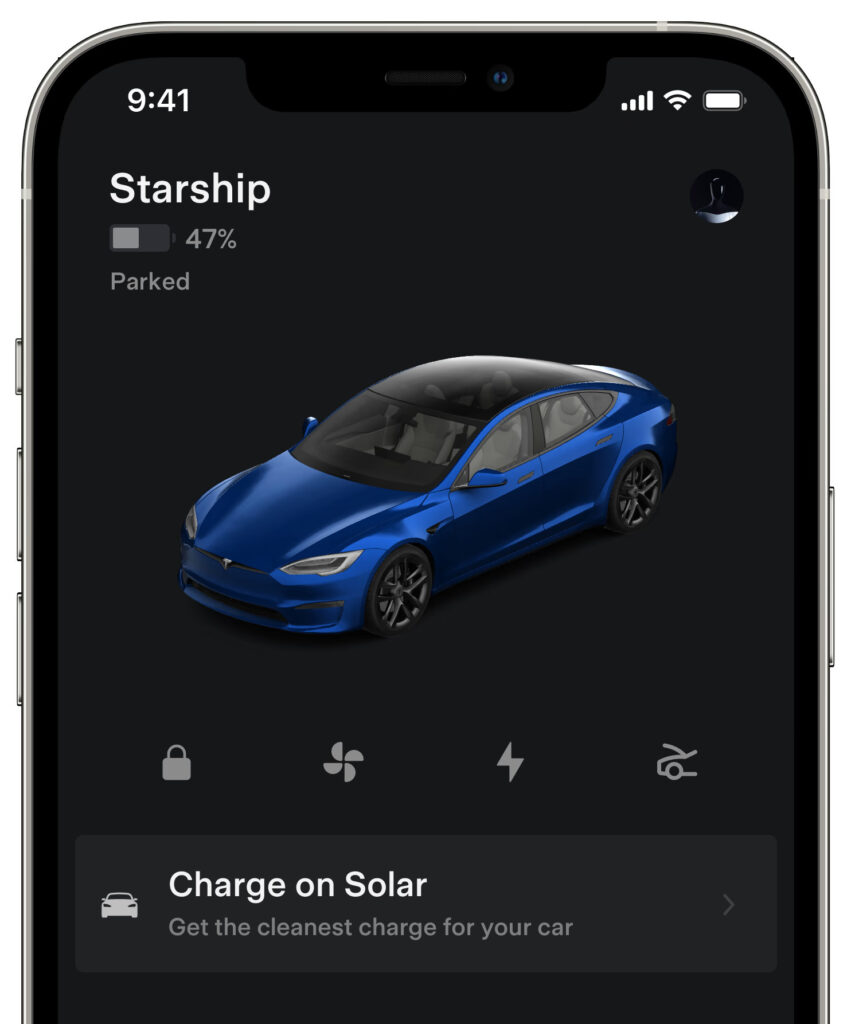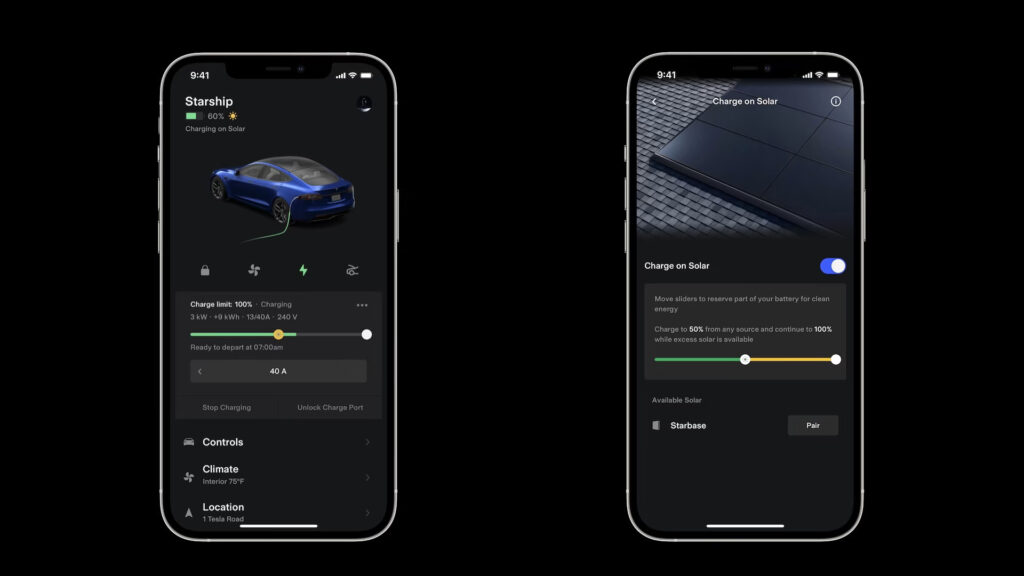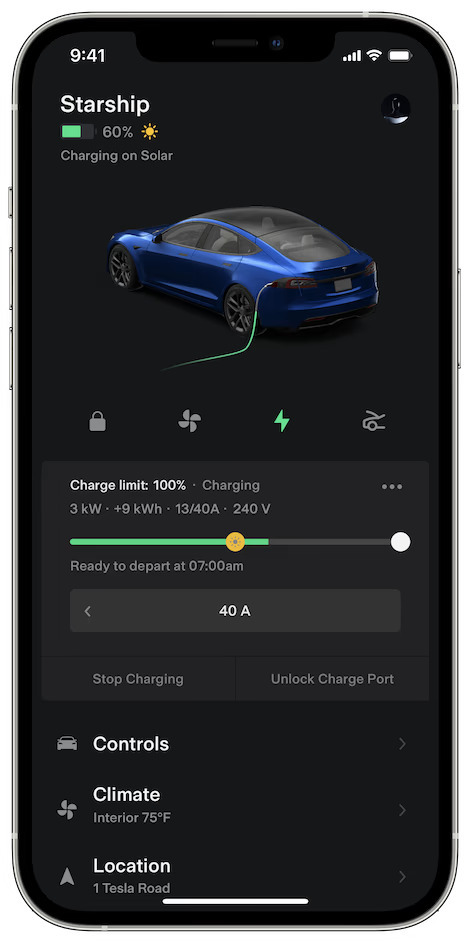Tesla just introduced a new ‘Charge on Solar’ feature that can turn excess solar energy into automotive battery power. Tesla owners will need a few specific things to make the new feature work. Here’s a brief overview of the technology and the way it works.
To leverage this new feature, users will need a Tesla vehicle with software version 2023.26 or higher, a Tesla Powerwall with software version 23.12.10 or higher, and solar power on-site. Finally, they’ll need the Tesla app (version 4.22.5) to adjust how the two work in harmony with one another.
Once those items are all in place, users can simply open the Tesla app, select the vehicle in question, and then hit “Charge on Solar.” The application will then ask the user to set a charge limit and preferred charge location. In short, this should allow users to pull only as much charge as they want from the grid before topping up with solar only.
More: Tesla Agrees To $6 Million Settlement Over Solar Roof Price Hikes

Once switched over to solar charging, the vehicle will monitor the charging situation in real-time and adjust the power charging level every ten seconds as needed. Users can also schedule when to use solar charging and when not to.
One of the big benefits here is simply increasing the total power that one can take advantage of via solar panels. Instead of having to pull energy that is already stored in the Powerwall, this new system skips that and simply powers the vehicle.
It’s worth noting too that, at least for now, this feature only works with Tesla Powerwall. Those who have third-party batteries that store solar energy can’t take advantage of Charge on Solar for now. It’s plausible too that using this feature could end up costing more since energy costs vary from location to location.







